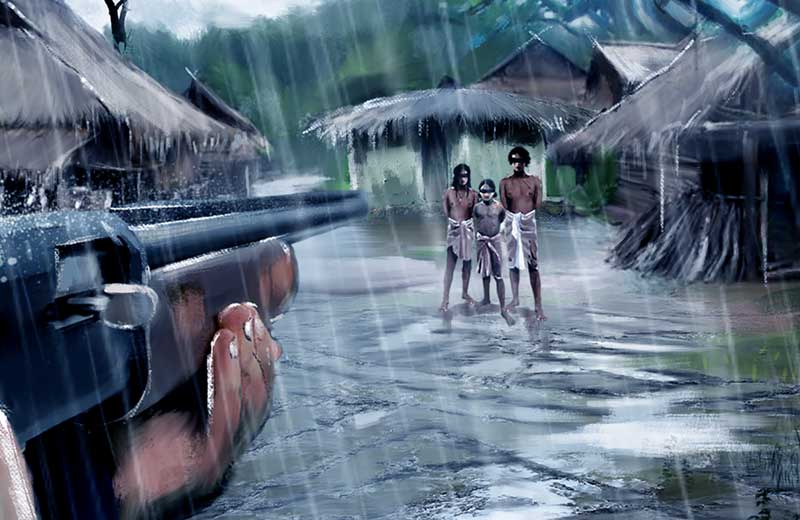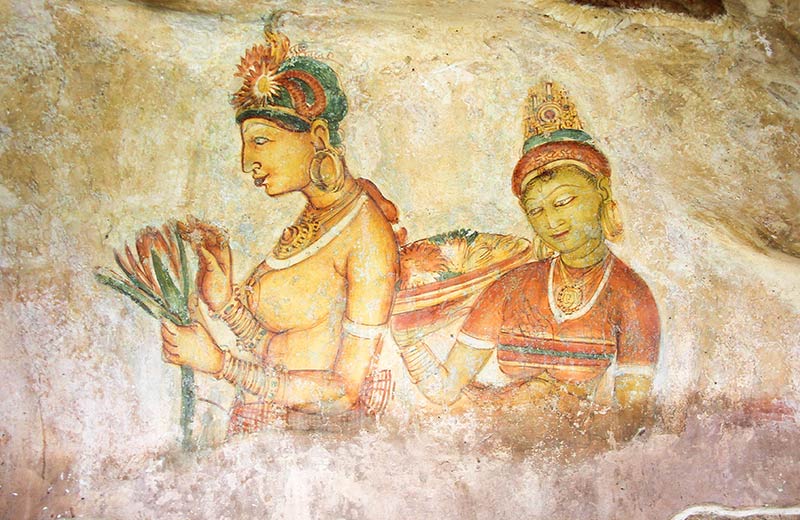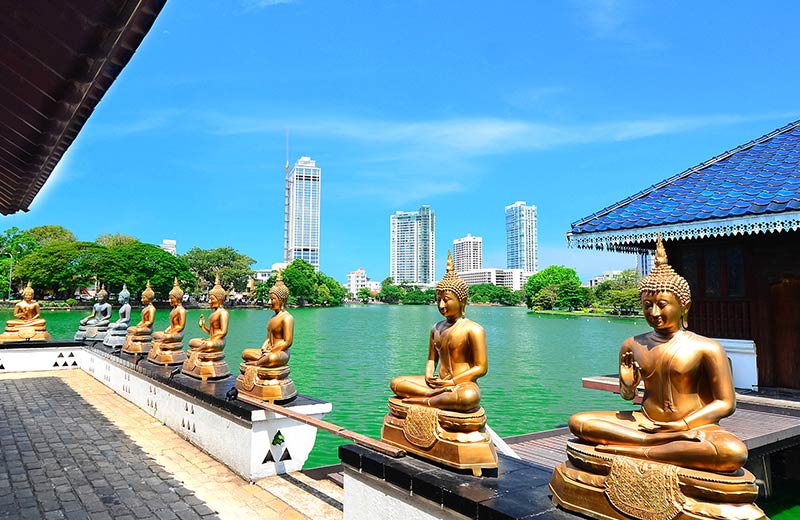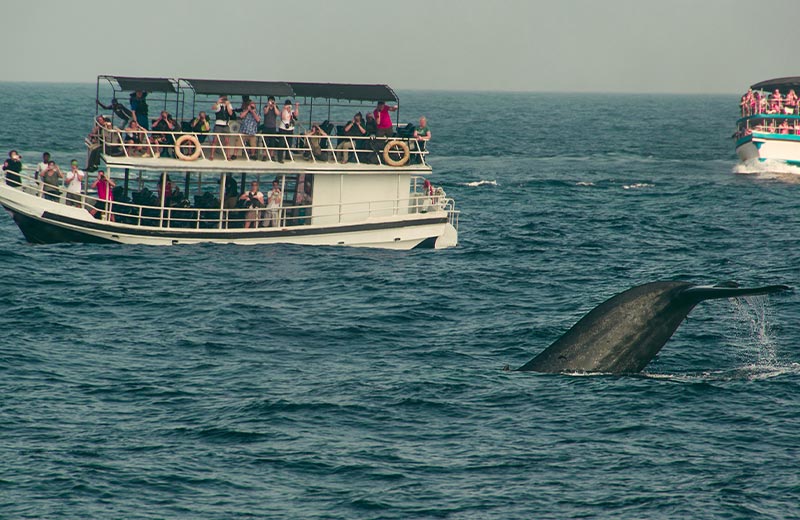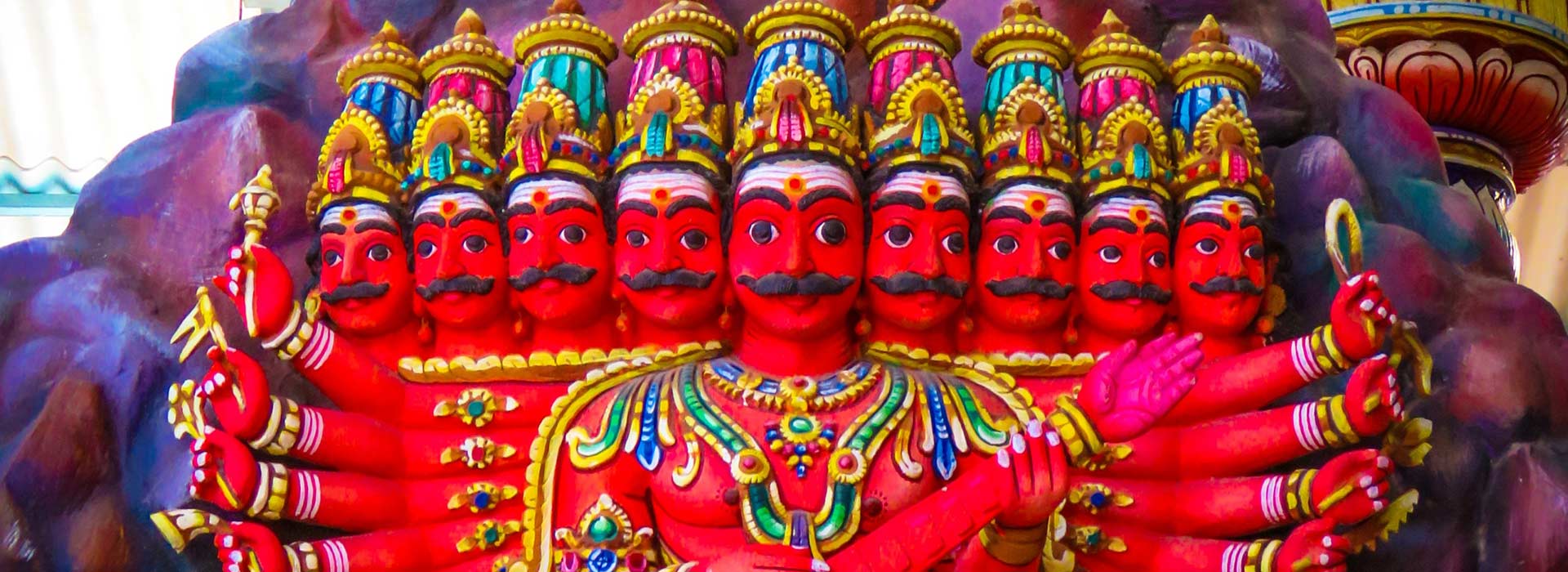The Legend ofKing Ravana and the Ravana Caves
Nestled amongst mountains, forests and tea plantations, lies the once sleepy hill country town of Ella. The region’s current popularity as a must-visit tourist destination sometimes supersedes its original claim to fame – the Ravana Ella and the Ravana Caves – which link Ella to one of the greatest legends in South Asia.
King Ravana – a figure that features prominently in Hindu mythology – is believed to have been the great demon king of the fortress island of Lanka, now Sri Lanka. He is portrayed as having ten heads and twenty arms, and is supposed to have been able to change his form as he pleased. In Hindu mythology, Ravana is portrayed as an evil, demon king, the villain in the famous story of Rama and Sita, as chronicled in the Sanskrit epic – Ramayana. However, in Sri Lankan culture, Ravana is often considered in a more positive light – a skilled warrior, a healer adept in Ayurvedic practices, and a powerful king, who even possessed an ancient flying machine, the Pushpak-vimana.
The Kidnapping of Sita
According to the narrative recorded in the Ramayana, Prince Rama, the hero of the tale, was a handsome, good and virtuous man. His wife Sita, was a beautiful woman, who was extremely loyal to her husband. Legend states that Ravana’s sister, Shurpanakha fell in love with Rama upon seeing him in the forest. Rama rejected her advances, and when she tried to attack Sita in retaliation, Rama’s brother Lakshmana stopped her by cutting off her nose and ears. Shurpanakha returned to her brothers and complained about the events that transpired with Rama and Lakshmana. Her brother Khara attacked Rama to appease his sister, but was defeated. Upon hearing this news, Ravana decided to kidnap Sita, as revenge against Rama.
Distracting Rama and Lakshmana and luring them away from Sita, Ravana requested her to return with him to Lanka, promising her the luxuries and comforts of his great kingdom. When Sita refused his advances, Ravana forcibly abducted her and took her to Lanka aboard his air chariot. Once they reached Lanka, Ravana tried to persuade Sita to marry him, promising that she would become his empress, and gain the riches of his kingdom. However, the virtuous and loyal Sita reprimanded Ravana for stealing another man’s wife, and refused to agree to his proposition. She even refused to reside in his castle, and instead chose to live in the Ashoka Vatika – a vast garden of Ashoka trees.
Meanwhile, Rama realized that Sita was kidnapped and began to lament her disappearance. Soon after, Lakshmana joined Rama in the search for Sit, and along the way, they were joined by Hanuman, a monkey demi-god. Hanuman made his way across the seas and arrived in Lanka, on the trail of Sita, locating her in the Ashoka Vatika.
Hiding Sita in Lanka
According to many legends passed down the generations, Ravana is believed to have hidden Sita in various locations around Lanka, possibly moving her around the island to prevent Rama from locating her hiding place. This is why many locations across Sri Lanka have strong associations with the Ramayana.
One of the places that Ravana chose to hide Sita is believed to be the caves behind Ravana Ella (Ravana Waterfall). Archaeological excavations carried out in these caves have revealed evidence of human habitation dating back 25,000 years. It is also believed that Sita used to bathe in a pool created by the water cascading down the Ravana Ella. Legend also states that King Ravana used to play an ancient musical instrument – the Ravanahatha – here at the falls.
The Fate of Sita
Rama and his allies eventually fought and defeated Ravana and his armies in an epic battle. Having rescued Sita from her abductor Rama had doubts about her loyalty to him, forcing her to undergo ‘Agni Pariksha’ (trial by fire) to prove her fidelity to him. The couple eventually returned to Ayodhya where Rama ruled for many years.
The legend of Rama, Sita and Ravana has unsurprisingly made an indelible mark in the tales of Sri Lanka. The character and story of Sita, particularly is venerated and admired by many, leading to the erection of the Seetha Amman Temple, located in close proximity to Nuwara Eliya.
